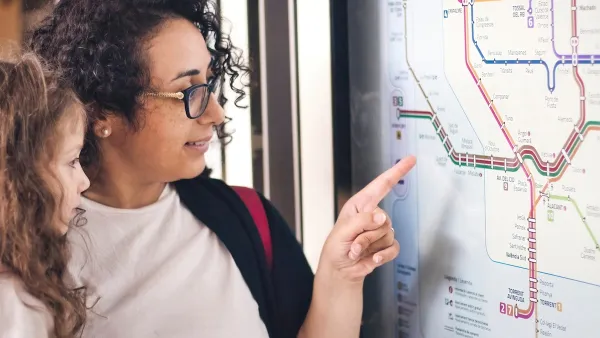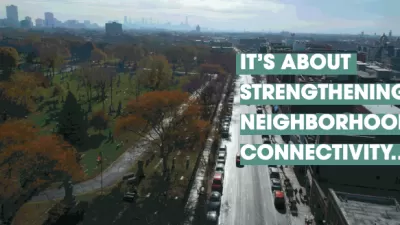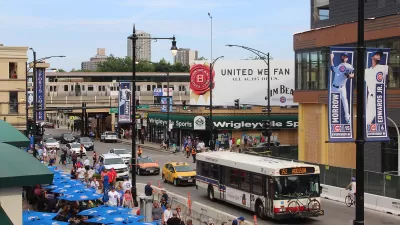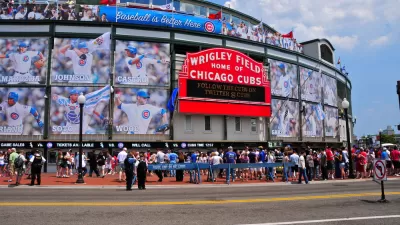The Wrigleyville neighborhood of Chicago will have a national audience this week for the first time since 2003. The neighborhood has changed, and is poised for even more change.
Rachel Crosby describes the changes that have swept across the neighborhood of Wrigleyville in Chicago. Over a timeline of 30 years, a rough and tumble" neighborhood has given way to busy bars, flags that say "Cubs" and "W" lining the streets, and the smell of stale beer. On that later point, the proliferation of bars in the area is one of the noticeable changes described in the article.
At the enter of the neighborhood is Wrigley Field, home of the Chicago Cubs—the third most visited of all the ticketed places in the city. "Yet if Wrigley Field is the heart of Wrigleyville, the 80 or so neighboring bars and businesses are its lifeblood. They stretch down Clark and up Sheffield and are speckled farther out, in between houses and condos and apartments around Lakeview," writes Crosby.
But a $575 million development project is underway at the ballpark, which the teams can provide a catalytic development for the neighborhood. The hope is that the new development will inspire visitors to stay, rather than just visit.
The Cubs are doing their part in changing the perception of the neighborhood, by hosting games in the National League Championship Series. "Outside bars, signs on the street ask patrons to be quiet and respect neighbors. It's a problem that's grown parallel to the bar scene's evolution. But on days like Tuesday, when the Cubs clinched the National League Division Series for the first time at home, it's hard to hold back the celebration."
FULL STORY: Wrigleyville on brink of new era

Planetizen Federal Action Tracker
A weekly monitor of how Trump’s orders and actions are impacting planners and planning in America.

San Francisco's School District Spent $105M To Build Affordable Housing for Teachers — And That's Just the Beginning
SFUSD joins a growing list of school districts using their land holdings to address housing affordability challenges faced by their own employees.

Can We Please Give Communities the Design They Deserve?
Often an afterthought, graphic design impacts everything from how we navigate a city to how we feel about it. One designer argues: the people deserve better.

The EV “Charging Divide” Plaguing Rural America
With “the deck stacked” against rural areas, will the great electric American road trip ever be a reality?

Judge Halts Brooklyn Bike Lane Removal
Lawyers must prove the city was not acting “arbitrarily, capriciously, and illegally” in ordering the hasty removal.

Engineers Gave America's Roads an Almost Failing Grade — Why Aren't We Fixing Them?
With over a trillion dollars spent on roads that are still falling apart, advocates propose a new “fix it first” framework.
Urban Design for Planners 1: Software Tools
This six-course series explores essential urban design concepts using open source software and equips planners with the tools they need to participate fully in the urban design process.
Planning for Universal Design
Learn the tools for implementing Universal Design in planning regulations.
Borough of Carlisle
Smith Gee Studio
City of Camden Redevelopment Agency
City of Astoria
Transportation Research & Education Center (TREC) at Portland State University
City of Camden Redevelopment Agency
Municipality of Princeton (NJ)





























